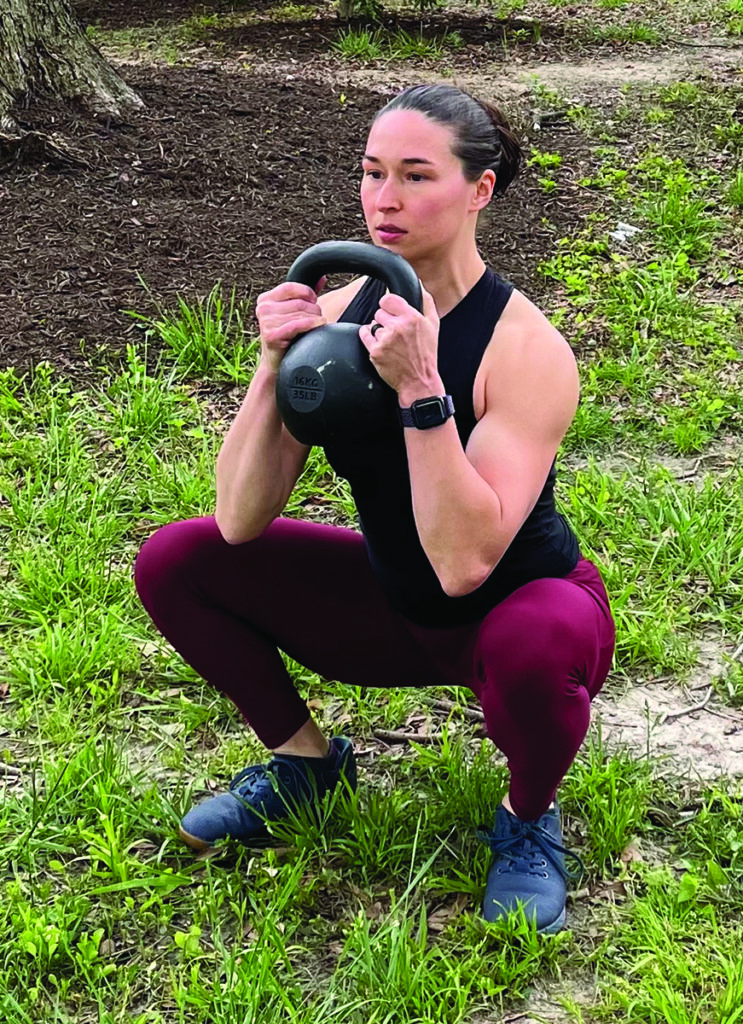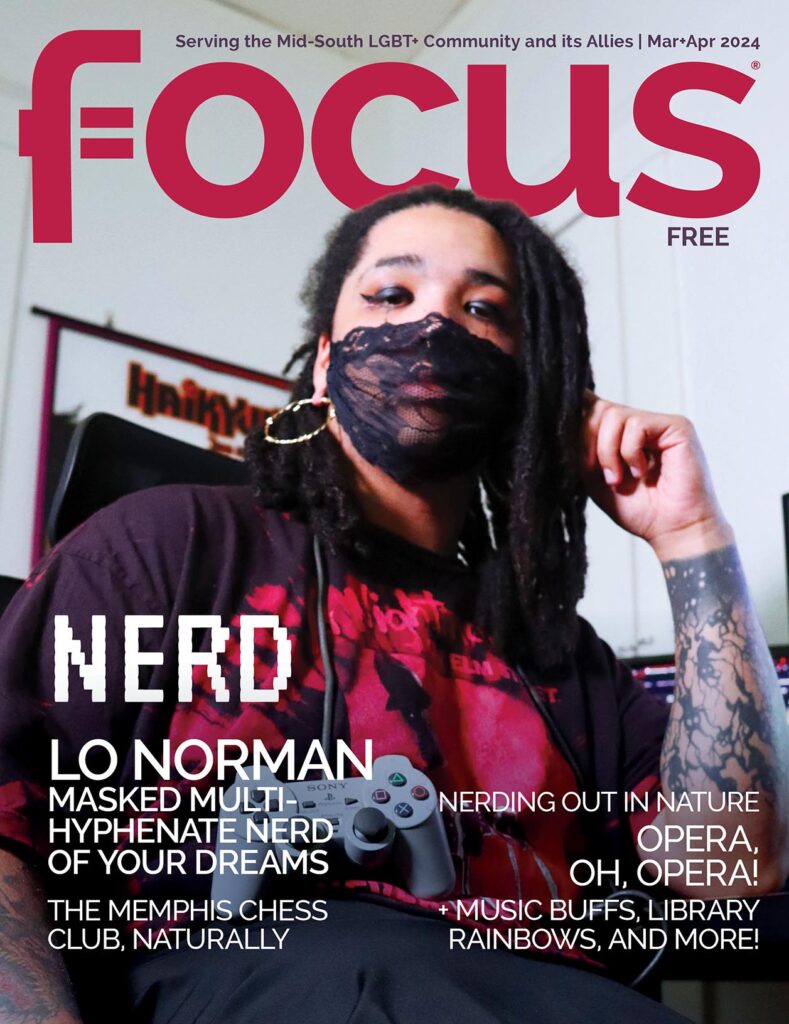by Nikki R. Veit
When’s the last time you walked into an actual gym and took a group class or lifted some weights on your own? If you’re thinking “March 2020,” you’re not alone. In fact, maybe you can specifically pinpoint that moment you got an email from your local gym that told you it was closing its doors indefinitely. Maybe you were someone who frantically worried about how you were going to stay on top of your weekly workout routine or maybe you were entirely too busy focusing on taking care of your children, let alone yourself, to even think about the gym. As a full-time personal trainer, my first thought was, “damn, how am I going to train my clients?” I was less concerned about keeping my actual job and more concerned about the physical and mental well-being of my clients because being someone’s trainer is so much more than telling them how to work out.
As soon as the pandemic started sweeping the globe, I knew I needed to come up with fast and creative ways to support my clients. Transitioning my business from in-person sessions to virtual sessions was a no-brainer, but convincing my clients to do the same took some convincing. I knew that most people would push back on the idea of working out at all but I also knew they needed something to help them maintain some semblance of a normal routine, not to mention the famous saying, “exercise gives you endorphins, endorphins make you happy…”.
When it comes to working with my clients, I’m not just an endorphin dealer. I take it upon myself to educate and empower my clients to feel confident in their abilities. When the pandemic hit, I knew I had a unique obstacle to overcome with my clients because I ultimately wanted to teach them that they can always workout from home. Of course, I heard the line, “I’m stuck at home and have zero gym equipment, there’s no way I could workout here” time and time again, but what they were failing to realize at the time is that gym equipment is all around them. Anything can be a weight: detergent bottles, heavy pots (especially when filled with water), milk gallons, even chairs and footstools! Furthermore, furniture makes for great surfaces to do push-ups, rows, squats, and plank variations. I suddenly realized the space wasn’t the obstacle, the mindset to workout was the obstacle. Cue the “ding, ding, ding” as I launched into re-educating my clients on how to transform their home into a fully equipped gym.
By writing this article, I want to bring that education to the page. What it takes to write an effective and efficient workout from home starts with knowing what each exercise’s purpose is and how to strategically place it in a workout. Once you have the workout written out, it’s time to get creative with the furniture and objects you have within reach, and then…get to work! Let’s start from the top.

I like to break down all the exercises I come across into 5 unique movement patterns (think of these as “exercise categories”) because it allows me to focus on each exercise’s purpose and it helps me to write better programs for my clients. Not to mention, everyone loves a category— without them, we’d never be able to separate our work life from home life, and that’s gotten increasingly more difficult in this yearlong #workfromhome lifestyle. The 5 movement patterns consist of press, pull, knee-dominant, hip-dominant, and core exercises. Now let’s break down each category by description and exercise examples.
Press movements are upper body focused exercises and consist of your chest press, shoulder press, and push-up variations. Anytime you are pressing resistance away from your body, you are performing a pressing movement. You can press away resistance from both vertical and horizontal angles (think of your shoulder presses as vertical and your chest presses as horizontal). You can also include tricep exercises in this category as you are typically pressing weight away from you when doing tricep work.
Pull movements are the other side of your upper body movements and include your row and pulldown variations. The opposite of press movements, pull movements are performed when you are pulling resistance toward you. You can also pull resistance from both vertical and horizontal angles (think of lat pulldowns or chin-ups as vertical and dumbbell rows as horizontal). You can also include bicep exercises in this category as we are typically curling weight toward us when performing bicep exercises.
Knee-dominant movements are the meat of your lower body movements and consist of your squat and lunge variations. Any exercise that requires full flexion of the knee joint (aka bending your knees to their fullest extent) is included in this category. But be careful! When I say “knee joint,” I don’t want you over-loading your knees and causing pain in that area, I specifically mean to bend your knees and load the resistance onto your quad muscles that are on the front of your thighs above your knees.
Hip-dominant movements are also lower body movements and are your deadlift and Kettlebell swing variations—you can even include some jumping movements in this category. Consider this category the opposite of the knee-dominant movements: anytime we are hinging the hips back (literally moving the pelvis backward in space), we are loading weight into your hips, glutes, and hamstring—opposite to loading weight into your quads and knees.
Finally, we have everyone’s favorite category: core movements! These are your plank variations and various rotational/anti-rotational exercises and are most often performed with just bodyweight. However what a lot of people don’t realize is that in order to perform any of the movements listed above, you must brace your core! Bracing your core, aka tensing your ab muscles as though you are about to be punched in the gut, helps resist force or weight when performing exercises. Your core is also what helps maintain your posture in most movements, for example squatting a heavyweight with proper technique simply can not be performed without bracing the core as hard as possible. Think of this the next time you squat 😉
For maximal efficiency of your time and workouts, full-body workouts are the way to go. They work every muscle in the body and you can get great results by doing full- body workouts 3-4/week. Now that we’ve broken down each of the 5 movement patterns, let’s see how they would fit into a full-body workout:
1a. Squats (knee-dominant) 1b. Rows (pull)
1c. Plank (core)
x 3 rounds, resting 60s between movements
2a. Deadlifts (hip- dominant)
2b. Push-ups (press)
2c. Plank (core)
x 3 rounds, resting 60s between movements
Boom! There’s a full-body workout, certainly not the only one but one of my go-tos. Notice how I alternated the lower body and upper body movements and always finish the circuit with a core exercise. By picking one movement from each category, you always ensure you are using every muscle in the body, and core work can always be doubled. Lower body exercises typically move more weight and recruit bigger muscles than upper body exercises, so they usually go first due to the amount of energy required. Using this template, you can simply pick different exercises from the 5 movement categories and create a plethora of different workouts. Get creative with using different household items as weights or simply use your bodyweight!
I hope this guide helps resolve the obstacles around working out from home. Sometimes the simplicity of having a plan and reasons for its design is enough to go by. Be confident in your mindset and space and trust that you can create full gym workouts from the floor of your living room.


